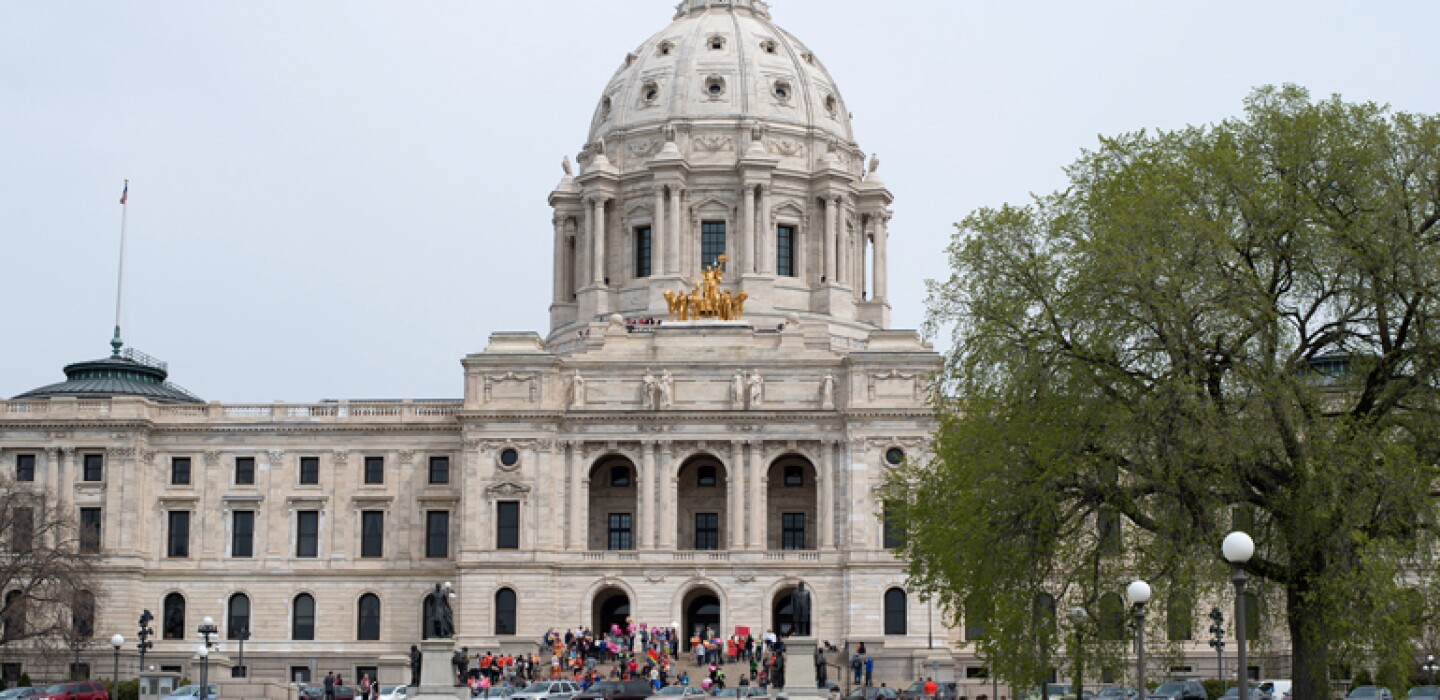
Minnesota $17.5B Surplus a Boon for Local First Responders
(TNS) – A total of $300 million in Public Safety Aid from the 2023 Minnesota state budget surplus is now in the hands of local police, firefighters and sheriff’s offices.
“This is really an exciting time for us,” Mankato Public Safety Director Amy Vokal said during a recent City Council workshop that detailed the potential uses of the nearly $2 million windfall for her department.
The Legislature provided wide leeway in how the funds can be used, and there’s no deadline on when it must be spent. But local policymakers will need to recognize it’s not a recurring appropriation. Instead, it was allocated from the two-thirds of the $17.5 billion state surplus that — because it was generated by unique trends such as federal pandemic relief programs — is not expected to be seen again in future years.
“This is one-time money,” Vokal said. “So once it’s gone, it’s gone.”
Of the $300 million, 70 percent went to cities and towns of all sizes and to townships with populations of more than 10,000. The other 30 percent was divided among counties and tribal governments.
Within each category, the aid was disbursed on a per capita basis. Even tiny towns without police departments were included.
The choices for elected officials range from monumental to minuscule. Minneapolis, for instance, will have to decide how to spend more than $19 million. For Kinbrae, a southwestern Minnesota town in Nobles County with an estimated 2022 population of eight, the allocation is just $350 — meaning options might not extend much beyond giving each resident $43.75 to keep an eye on the other seven.
The specific restrictions on the use of the money are relatively few. It can’t be used for a city or county’s contribution to employee pension funds or for “any costs associated with alleged wrongdoing or misconduct,” according to the Department of Revenue. Other prohibited uses include the purchase of armored vehicles and tear gas or the construction of a police station.
By contrast, the explicitly mentioned legitimate uses cover a broad spectrum, the revenue department states: “Community violence prevention and intervention programs; community engagement; mental health crisis responses; victim services; training programs; first responder wellness; equipment related to fire, rescue, and emergency services; to pay other personnel or equipment costs.”
In North Mankato, a decision has been made on how to spend about a third of the $632,818 it received. The city first divided the funds between police and fire, with the Fire Department getting $158,200 (25%) and the Police Department getting $474,000.
“The Police Department has earmarked those funds for the purchase and implementation of our body-worn camera program, as well as the replacement of two patrol vehicles,” Police Chief Ross Gullickson said.
That will still leave about $264,000.
“The remaining funds will be held for future use as needs and opportunities present themselves,” Gullickson said.
Vokal, who oversees both the police and fire departments in Mankato, said a variety of uses are being discussed for the $1.956 million provided by the state.
Faster squad cars would have likely been at the top of the wish list for previous generations of police officers, she said. But the types of cops entering the profession now are more interested in opportunities to engage with young people and other members of the public.
“Post Geroge Floyd, we see these kinds of officers come into the workforce…They want to touch the community,” she said.
To accomplish that requires time, so one use of the Public Safety Aid could be to pay overtime for neighborhood engagement, youth programs such as a bike-safety rodeo, or activity leagues and other outreach efforts.
Training programs are also a priority — not just in day-to-day skills but crisis intervention and leadership.
“We don’t want to train just to the minimum,” Vokal said.
The educational initiatives could include a scholarship program to allow officers to obtain a master’s degree in criminal justice or pursue Spanish language fluency, EMT training and more. Another idea is to persuade mental health professionals to do ride-alongs with officers to offer perspectives and insight on how to better provide services, she said.
Crime and fire prevention programs, reward money for tips that help solve crimes and moving the city closer to having two full-time fire stations to improve response times are other possible funding uses.
The department also is considering using some of the funds for “overhires” when a top-notch young officer is available and a veteran is nearing a planned retirement. The one-time money would allow the department to temporarily finance an additional full-time position to keep the young cop or firefighter from taking a job elsewhere until he or she could slide into the slot being opened up by the upcoming retirement.
Many of those priorities will offer the added benefit of increased retention of officers, said Vokal, because they will feed Mankato’s reputation as a department that emphasizes community-oriented policing.
Even if most of those ideas are adopted, a portion of the Public Safety Aid would still be available in future years for equipment and enhanced crime-solving technology.
“We’re looking at more of a four- to six-year plan,” she said.
St. Peter Police Chief Matt Grochow didn’t respond to requests for information on planned uses of that city’s $528,000 in Public Safety Aid. Attempts to reach Blue Earth County Sheriff Jeff Wersal and Nicollet County Sheriff David Lange also were unsuccessful. Blue Earth County has $1.115 million in Public Safety Aid to spend and Nicollet County has $573,000.
The amounts for other area counties include $620,000 for Le Sueur County , $430,000 for Brown County, $369,000 for Waseca County, $335,000 for Sibley County, $266,000 for Faribault County and $201,000 for Watonwan County.
___
©024 The Free Press (Mankato, Minn.)
Distributed by Tribune Content Agency, LLC.

Average Rating